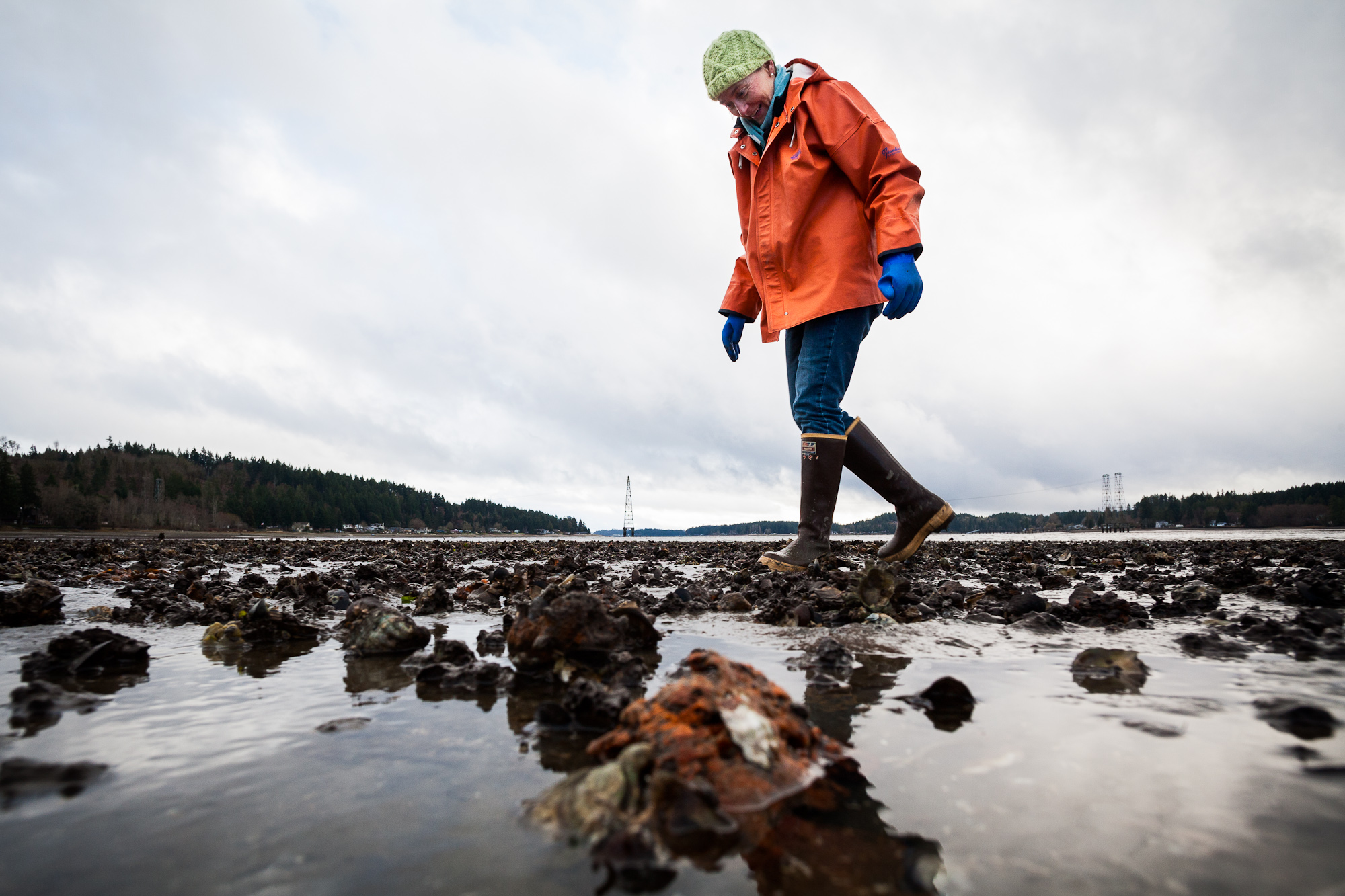Rebuilding native oyster beds and important habitat
The Olympia oyster is Washington’s original oyster. As our only native oyster species, they help keep our estuaries healthy by providing habitat for a diverse community of organisms. The oysters grow in aggregations, creating beds that provide shelter and habitat for young crabs, forage fish, and other marine animals. Over the past 70 years, over-harvest, pollution and habitat loss resulted in significant declines of Olympia oyster populations. Since 1999, Puget Sound Restoration Fund (PSRF) and partners have been rebuilding Olympia oyster populations and the habitat they provide across 19 priority areas in Puget Sound. Recovery techniques include spreading thousands of yards of Pacific oyster shell across bays for young oysters to settle and grow. Young oysters are also grown on shell material in hatcheries, and then spread out across restoration sites. Olympia oysters are also re-emerging on menus throughout the region, grown by shellfish farmers supporting Washington’s multi-million-dollar oyster aquaculture industry. The native oysters also support the food web in Puget Sound.
What worked:
- Restored oyster habitat in Port Gamble Bay provided food and commercial harvest opportunities for tribes.
- Spreading 1,500 yards of shell created habitat for over 1.2 million oysters.
- As of 2018, PSRF and partners have restored a total of 67 acres of Olympia oyster habitat and produced nearly 12 million oyster seed.
- Collaborative partnerships resulted in successful expansion of the restoration program to more areas throughout Puget Sound.
Benefits:
- Pacific oyster shells provide a place for Olympia oyster larvae to settle and attach to create persistent populations.
- The commercial oyster industry provides jobs for Puget Sound.
- Restaurants advertise the benefits of locally-sourced native oysters.
- MRCs and tribes continue to identify new locations for restoration to create more habitat to support the marine food web.
Location:
- Congressional District: 1, 2, 6, 7, 10
- Legislative District: 42, 40, 10, 23, 24, 35, 26, 22, 28, 36
- WRIA: 1, 3, 7, 8, 9, 10, 12, 13, 14, 15, 16, 17, 18
- County: Whatcom, Skagit, King, Pierce, Thurston, Mason, Kitsap, Jefferson, Clallam
Partners:
- Washington Department of Fish and Wildlife
- Washington Department of Natural Resources
- NOAA
- Suquamish Tribe
- Swinomish Indian Tribal Community
- Jamestown S’Klallam Tribe
- Port Gamble S’Klallam Tribe
- Squaxin Island Tribe
- Skokomish Indian Tribe
- Nisqually Indian Tribe
- The Tulalip Tribes
- Skagit County Marine Resource Committee
- Whatcom County Marine Resource Committee
- Jefferson County Marine Resource Committee
- Clallam County Marine Resource Committee
- Northwest Straits Commission
- University of Washington
- The Nature Conservancy
- Commercial Shellfish Growers
- Tideland Owners and Community Groups
Project Funding:
- EPA National Estuary Program
- USDA (NRCS)
- US Navy
- NOAA
- Washington Department of Fish and Wildlife
- Washington Department of Natural Resources
- The Nature Conservancy
- National Fish & Wildlife Foundation
- Russell Family Foundation

